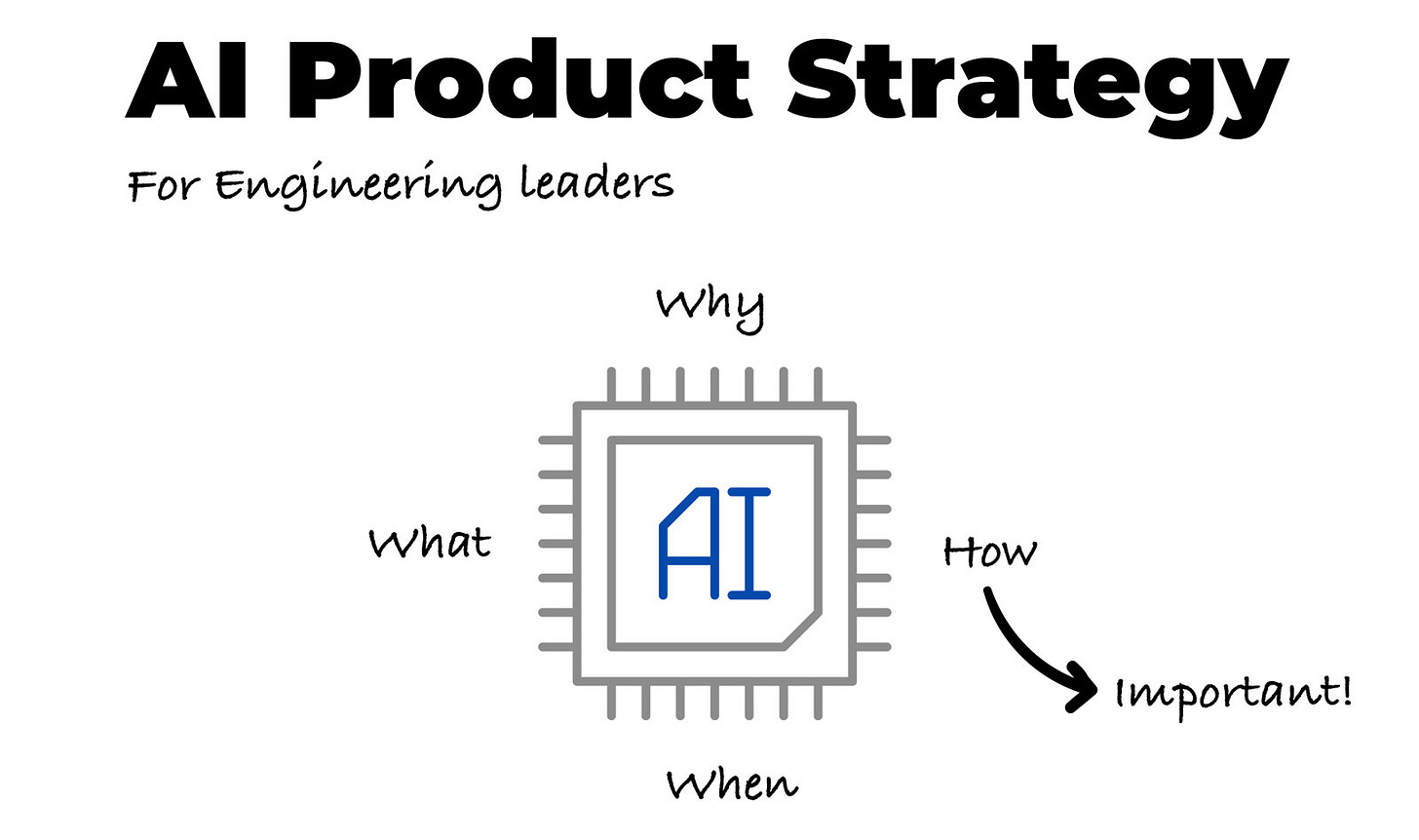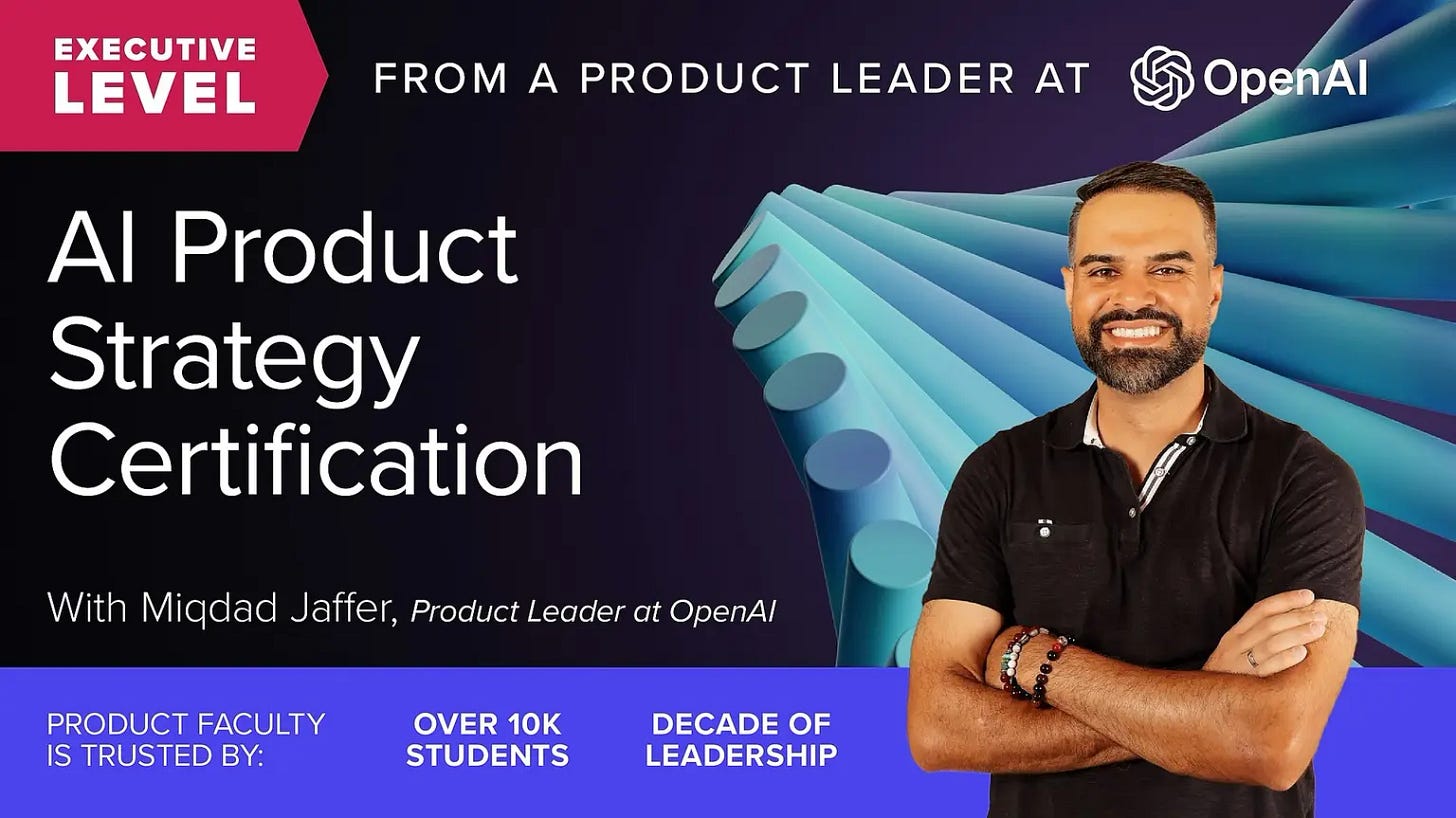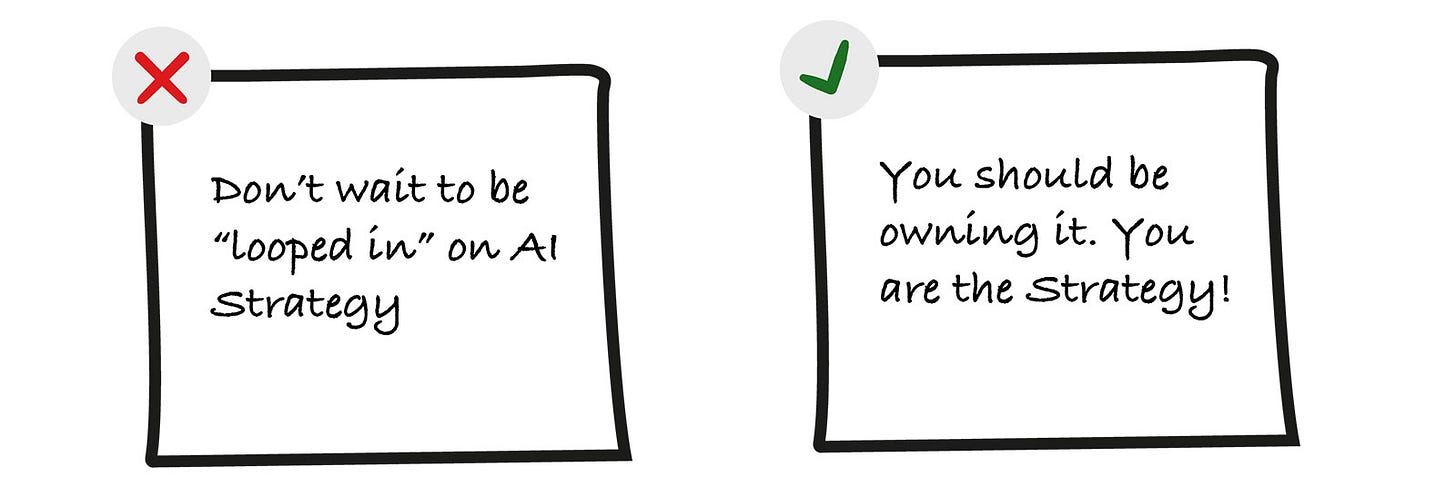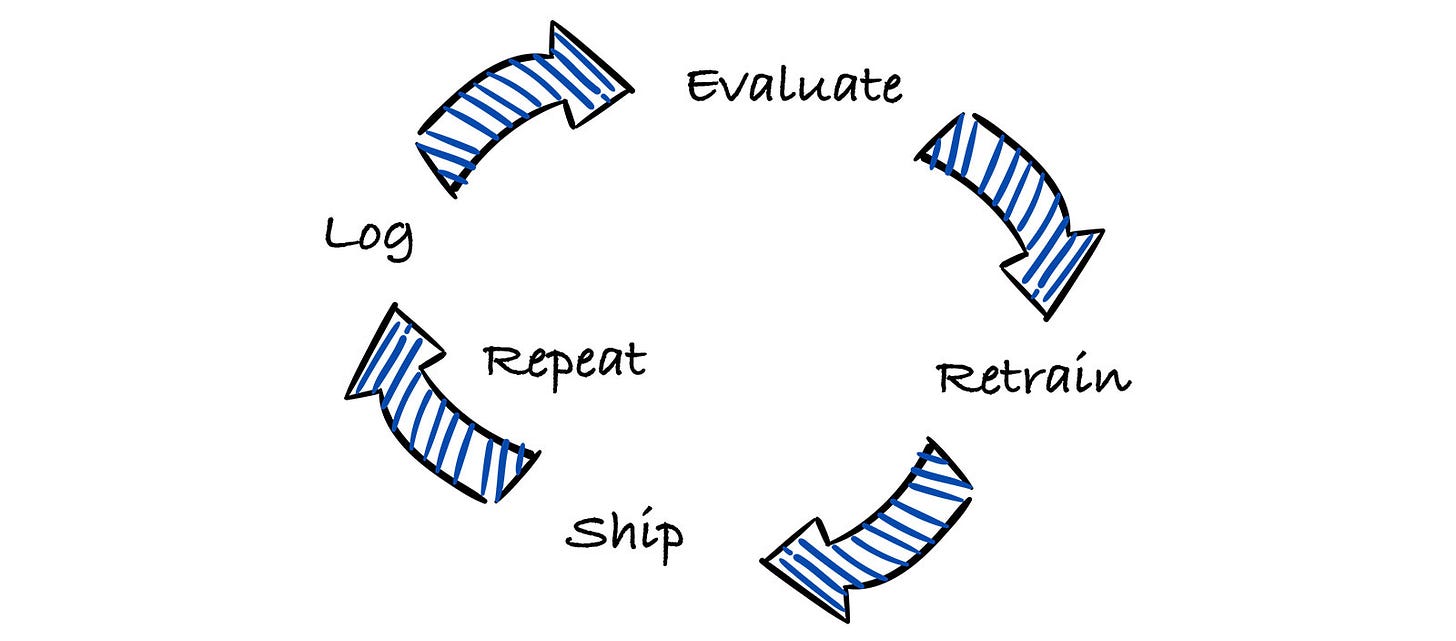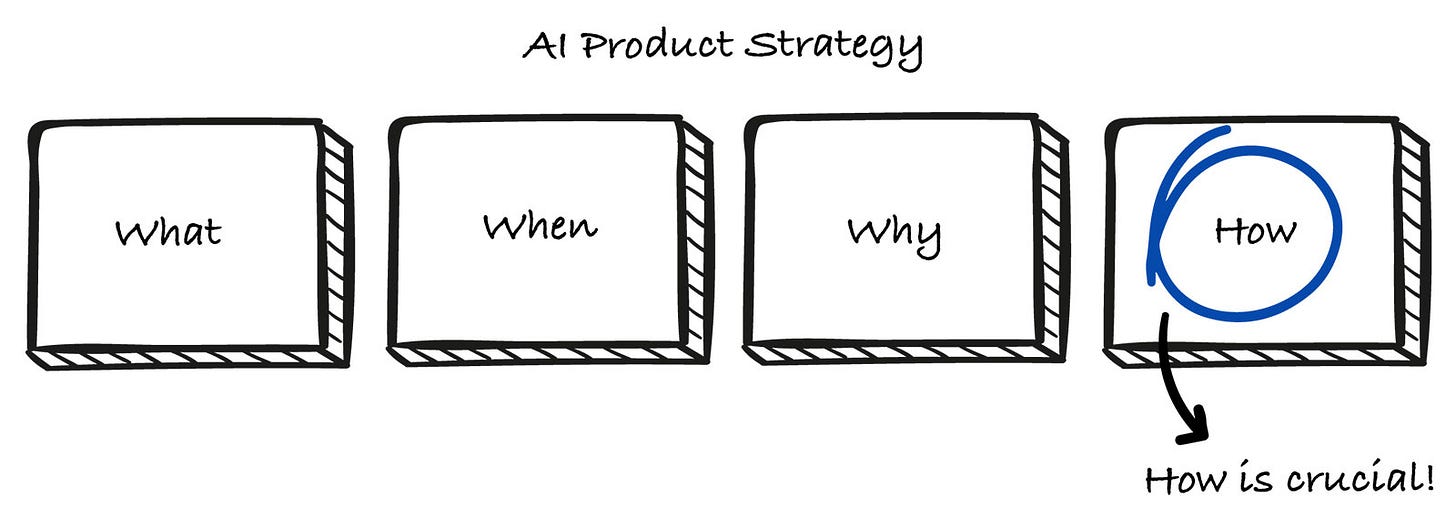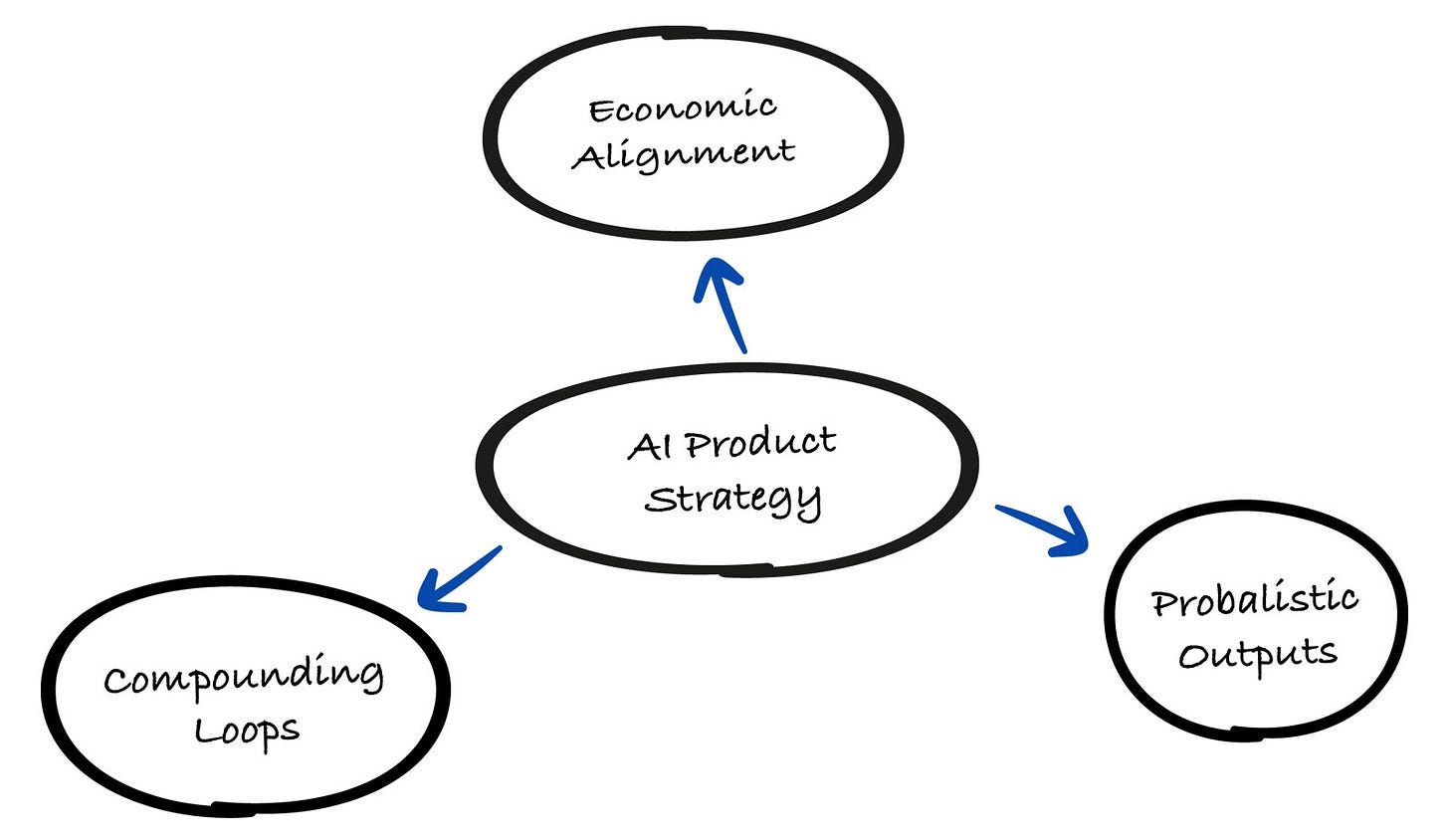OpenAI's Product Leader Reveals: AI Product Strategy for Engineering Leaders
Everything you need to build, scale, and win in the AI era with a proven 4D Strategy!
Intro
AI is showing up in every product roadmap, but the real challenge for engineering leaders? Turning ambition into execution.
Spoiler: You need a seat at the table before the roadmap is defined → There is no way that success is achievable without you playing a key part in defining it.
And how do you decide where AI actually adds value? Plus, how do you align teams on what to build, and avoid chasing shiny tools?
You need AI Product Strategy.
To ensure that we’ll get the best insights on AI Product Strategy and that you understand exactly what is expected of you as an engineer or engineering leader, I am happy to team up with Miqdad Jaffer, Product Lead at OpenAI.
This is an article for paid subscribers, and here is the full index:
- Why You Need a Seat at the AI Strategy Table, Not Just Execution
- Your Role: Traditional Product Strategy VS AI Product Strategy
- Where Strategy Used to Live vs. Where It Lives Now
- But What is an AI Product Strategy?
🔒 How Engineers Build Better AI Products: The 4D Strategy
🔒 1. Discovery
🔒 2. Design
🔒 3. Develop
🔒 4. Deploy
🔒 The Next 6 Months Will Define the Next 6 Years And Most Teams Aren’t Ready
🔒 Last words
Introducing Miqdad Jaffer
Miqdad Jaffer is a Product Lead at OpenAI. Before that, he was a Director of Product at Shopify, where he led a group responsible for the inclusion of AI across Shopify.
Miqdad is teaching the first 6-week AI Product Strategy Course. What I like most about this course is not just how packed it is with a lot of relevant information. But also, Miqdad is doing a written review of your AI product strategy.
Check the course and use my code GREGOR550 for $550 off. The cohort starts on September 27. The door closes soon.
Why You Need a Seat at the AI Strategy Table, Not Just Execution
If you’re a CTO or engineering leader still waiting for someone to “loop you in” on AI strategy. You’re already behind.
Because AI isn’t just some feature request you execute on. It’s a paradigm shift in how products are architected, deployed, and scaled. You can’t afford to be looped in after the roadmap is set.
Because when non-technical teams define AI initiatives in isolation, they’re often writing checks the infrastructure can’t cash.
Here’s what they don’t always see, but you do:
LLMs don’t behave deterministically. Output varies based on phrasing, temperature, even model version.
Costs aren’t fixed. They spike with retries, latency, and poor caching.
Infra isn’t monolithic anymore. It’s modular: RAG pipelines, model routing, prompt stacks, fallback logic.
You’re not “building what product specced”, you’re deciding trade-offs that directly shape margins, performance, and reliability.
You decide whether:
OpenAI vs Open Weights: Do we prioritize performance and speed to market or control, customization, and long-term margin?
Persistent Agents vs On-Demand Inference: Are we optimizing for memory and continuity or compute efficiency and scalability?
Caching vs Streaming: Should we reduce costs with aggressive caching or preserve interactivity and freshness?
GPU Spend vs User Latency: Can we afford to pay for milliseconds of speed or will users tolerate a slightly slower experience?
Prompt Engineering vs Fine-Tuning: Is this solvable with clever prompts or do we need deeper alignment and model-level training?
Closed vs Open Evaluation Pipelines: Are we blindly trusting model performance or building evals that reveal silent regressions?
RAG vs Static Embeddings: Should we augment with dynamic context or rely on precomputed knowledge?
Multi-Model Routing vs Single-Model Simplicity: Are we routing by use case, cost, or confidence or letting one model handle it all?
Token-Level Cost Visibility vs Blind Burn: Are we tracking cost per feature, per user or waiting for infra bills to shock us?
Feedback Loops vs Manual Debugging: Are we designing systems that learn over time or stuck babysitting brittle prompts?
Only YOU can answer those.
And when only you can answer those, why should you be the last person to hear about all this?
I genuinely believe AI product strategy is going to be the new leadership skill for engineers, CTOs, and technical leaders. Why? Because you already know how to build.
It’s time you develop the strategic skill so you can answer “what”, “when”, and “why” to build so you can lead the whole ecosystem.
Because every great AI product has one thing in common:
A tight engineering flywheel.
Log → Evaluate → Retrain → Ship → Repeat.
And every layer of that loop, from feedback capture to silent regression detection, should be owned by YOU.
In AI, infra is the product. And engineering is no longer the last mile, it’s the first mile of defensibility.
As a CTO, Staff+ engineer, or platform architect, you don’t need permission to lead AI strategy. You are the strategy.
So don’t wait to be looped in. Take the seat. Define the stack. Build the flywheel.
Your Role: Traditional Product Strategy VS AI Product Strategy
In AI products, how you build something defines how it performs, how it improves, and how defensible it is.
Let’s say you’re building an AI feature that summarizes internal sales calls.
Product might frame it like this: “Let’s help reps auto-summarize Zoom meetings into CRM fields.”
But how you engineer it is the difference between a toy and a moat:
Are you just piping the transcript into GPT-4?
Or are you building a custom summarizer trained on past CRM entries from your top-performing reps?
Are you capturing user corrections to fine-tune over time?
Are you labeling missed insights to improve RAG prompts?
Are you caching similar calls to reduce cost?
Are you measuring semantic precision with evals aligned to revenue impact?
This is AI system design and it’s not optional.
Without it, you ship generic features that are expensive to run, easy to copy, and hard to trust.
Where Strategy Used to Live vs. Where It Lives Now
If you don’t step up to shape these, you’ll be stuck reacting to decisions made without your input, cleaning up systems you didn’t design, and scaling products you don’t trust.
And one of the most dangerous parts of AI infrastructure is this:
It doesn’t crash. It degrades. Quietly.
You won’t see a 500 error. You’ll just notice that users stop using it.
The summaries feel a little off.
The assistant gets slightly slower.
The answers get weirder over time.
This is model drift, eval blindness, and feedback starvation… and if you didn’t build in eval hooks, feedback pipelines, and version control, you’ll have no idea why your retention dropped.
Only you can prevent this because only engineers can embed evals, track model performance, and log failure cases in a systematic way.
So, let me say this once again… Engineering Strategy IS AI Product Strategy
Owning AI product strategy as a technical leader doesn’t mean you need to write prompts all day.
It means:
You architect systems that are flexible, observable, and cost-aware
You define eval metrics that go beyond “it looks right”
You push back on projects that don’t have a data feedback loop
You ensure AI features don’t just run… they get smarter with every user
If you don’t do this, no one else will. The product team can frame problems. But only engineering can build systems that compound advantage over time.
But What is an AI Product Strategy?
AI product strategy is the art and science of designing products, data systems, and business models around the unique dynamics of artificial intelligence to create compounding value, at scale.
Unlike traditional product strategy, which focuses on market fit and feature-roadmap alignment, AI product strategy adds three non-negotiable dimensions:
Probabilistic Outputs: Designing for variability and trust in systems that can’t guarantee deterministic results.
Compounding Loops: Building proprietary data and feedback mechanisms that make the product smarter and more defensible with every use.
Economic Alignment: Managing inference costs, model-mixing, and value-based pricing so AI scales profitably at 10x, 100x users.
But how do you make sure you’re winning on all fronts without compromising on one thing?
My 4D AI Strategy method is the answer.



